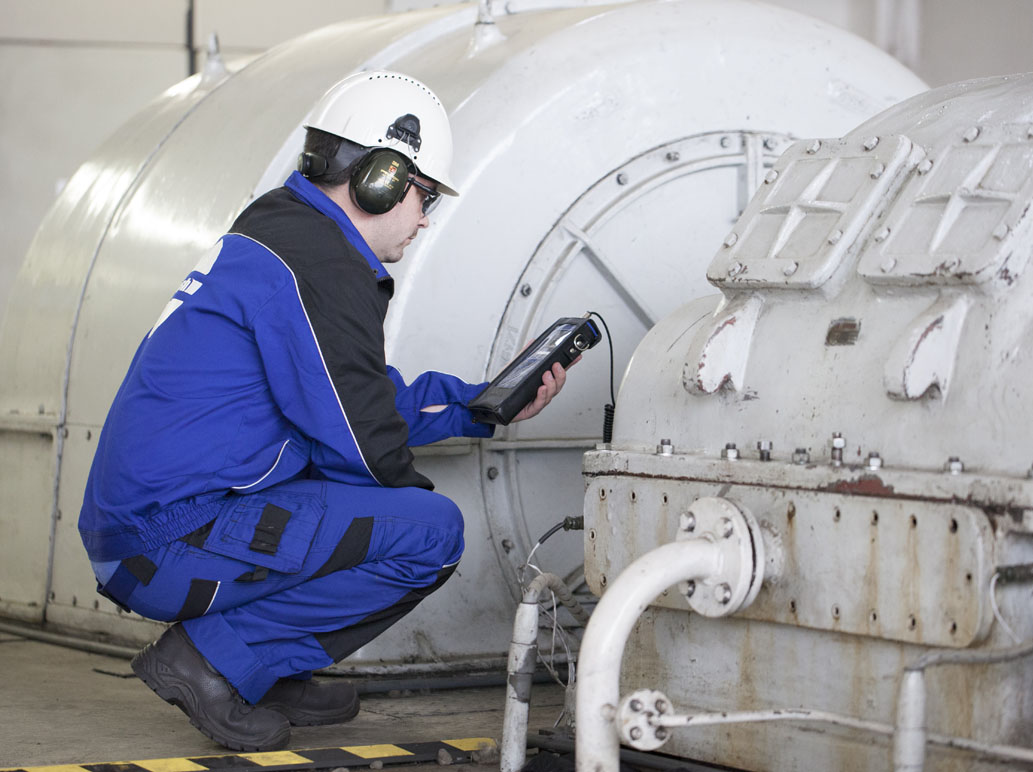
Choosing a machine maintenance strategy
Not using Predictive Maintenance or Proactive Maintenance today is like having a black and white TV at home. If you are using Predictive Maintenance, what are the real benefits compared to other maintenance strategies?
Terms like predictive maintenance, proactive maintenance, condition monitoring or vibration analysis, what do they mean?
Here is a simple explanation for new maintenance people who have never heard of them before and want or need to understand them.
Vibration in rotating machinery
Motors vibrate and the noise they make is actually that vibration. There is no need to explain that when you speak, your vocal chords create vibrations that are transmitted through the air to other people's ears.
You cannot see these vibrations, but you can hear them. Imagine a bass speaker playing music. Can you see the membrane of the speaker moving? Yes, you can. But can you see the movement of the motor when it is running? Not really. There are some excellent tools available today that allow us to 'see' the vibrations of a motor: the acceleration sensor and the vibration meter or vibration analyser.
Going back to the speaker, can you separate out every sound that comes out of the speaker when you play music? Well, not every single one, but if you have an equaliser you can separate the bass from the treble.
Why are we still talking about speakers? Music is very similar to the vibrations of a machine. On the machine you also want to separate these 'bass and treble' sounds, but here we are talking about separating machine faults, such as overall machine condition related to shaft speed (low frequency) and bearing or gearbox faults (higher frequency).
To separate these faults we use the vibration meters and vibration analysers mentioned above. The overall machine condition and the bearing condition are two basic things that we want to separate when performing vibration analysis. So, I hope this term is now clear to you.
Of course, vibration analysis is more sophisticated and later on you will find that you need to separate more sources of vibration that are being generated. For example, loose foundation bolts, unbalance, misalignment, fan blade faults, gear mesh faults and many more. But for now, let's just talk about these two basic things for ease of explanation.
There are other methods of assessing the condition of a machine and its faults. In addition to vibration analysis, you may have heard of ultrasonic detection, thermography and so on, and all these methods are part of condition monitoring. That was simple, right?
Music is very similar to machine vibration.
The importance of the maintenance concept
Each method has its pros and cons; it is up to your maintenance programme to decide which method to choose and use for your particular machines. But over the last few decades it has been found and proven that vibration analysis is the most efficient and reliable method for condition monitoring and maintenance of most rotating machinery.
Now the question is, what kind of maintenance strategy is applied in your factory? I don't believe that your company is using the oldest strategy, which is run-to-failure or so-called 'breakdown maintenance'. For example, if you have 100 people working on a production line and the big machine that is critical to that production breaks down, you will probably send your people home or give them another job, such as cleaning all the windows in the factory.
This would probably not be a big problem, but how much money will you lose by not producing for an hour? Or what if you have a deadline, your customer is waiting for your products and you are unable to deliver? You will lose that contract and possibly the customer as well, because they will try to find a better supplier.
A better, but not ideal, strategy is preventive or planned maintenance. This method is simple. For example, every year you change the bearing on 'machine number 1'. The first aspect is financial; the bearing could be expensive and maybe it would run for more years if you knew its real condition.
But ok, you install the new bearing and you expect it to run for a year because it is new. But what if the service company installed the new bearing badly? If it was badly placed, it would put excessive load on this bearing, would it still run for a year?
The predictive (proactive) maintenance approach
Finally, we come to the modern method that belongs to the 21st century and its need for reliable machinery and continuous production. This is predictive maintenance. We've got an idea of what it means from the word 'to predict'.
Predictive Maintenance gives you the biggest advantage over the other two methods above because it informs you about the actual condition of your machinery and you are ready to take some steps with your machine before failure.
Closely related to predictive maintenance is proactive maintenance. Proactive maintenance is more focused on activities that prevent the worsening conditions that lead to machine failure and degradation. Proactive maintenance initiates corrective actions that focus on the root causes of failure rather than the symptoms of failure.
But this method is not for free, you will have to invest some money if you want to outsource it.
You can hire a service company to do this for you. Of course, there are a lot of companies that do this job well; they keep tracking your machines every month or two, and they always give you some feedback about your machines.
But there are worse cases. I asked a friend of mine who works as a maintenance engineer for an alloy wheel company if they do predictive maintenance. He said: 'Yes, there is a company that comes in every six months, they measure something and then they show me a graph of Spectra, but I don't know what it means, so I don't care...'.
Your company could be paying a lot of money to these companies for nothing. A lot can happen in six months!
For one thing, your service company has no idea what you have done with your machines during that six months. You might have changed something or repaired something, but they don't know, and I don't believe they try to find out.
And if a machine breaks down, you complain to your service company, but they might say, 'Sorry, this is a sudden failure, probably a manufacturing defect'. And there is nothing you can do because they have included this 'sudden failure' in their contract...
Or you can do it yourself, which will cost you some initial investment and also your time, but if you do it right it will pay for itself very quickly. The investment could be as little as half the money you pay to an outsourcing company. You can start with a simple vibration meter or data collector.
Let's assume you start measuring on a machine in perfect / optimal condition. Start by measuring and trending the two values mentioned above. The first is the overall condition of the machine and the second is the condition of the bearings.
Measure them every month and keep checking the trend of the values. Are they still the same without any changes? If so, your machine is still fine. But if you see that one of them is rising, you have an indication that something is happening and you can plan a correction or repair in advance. Simple, isn't it? Don't wait, start today!


